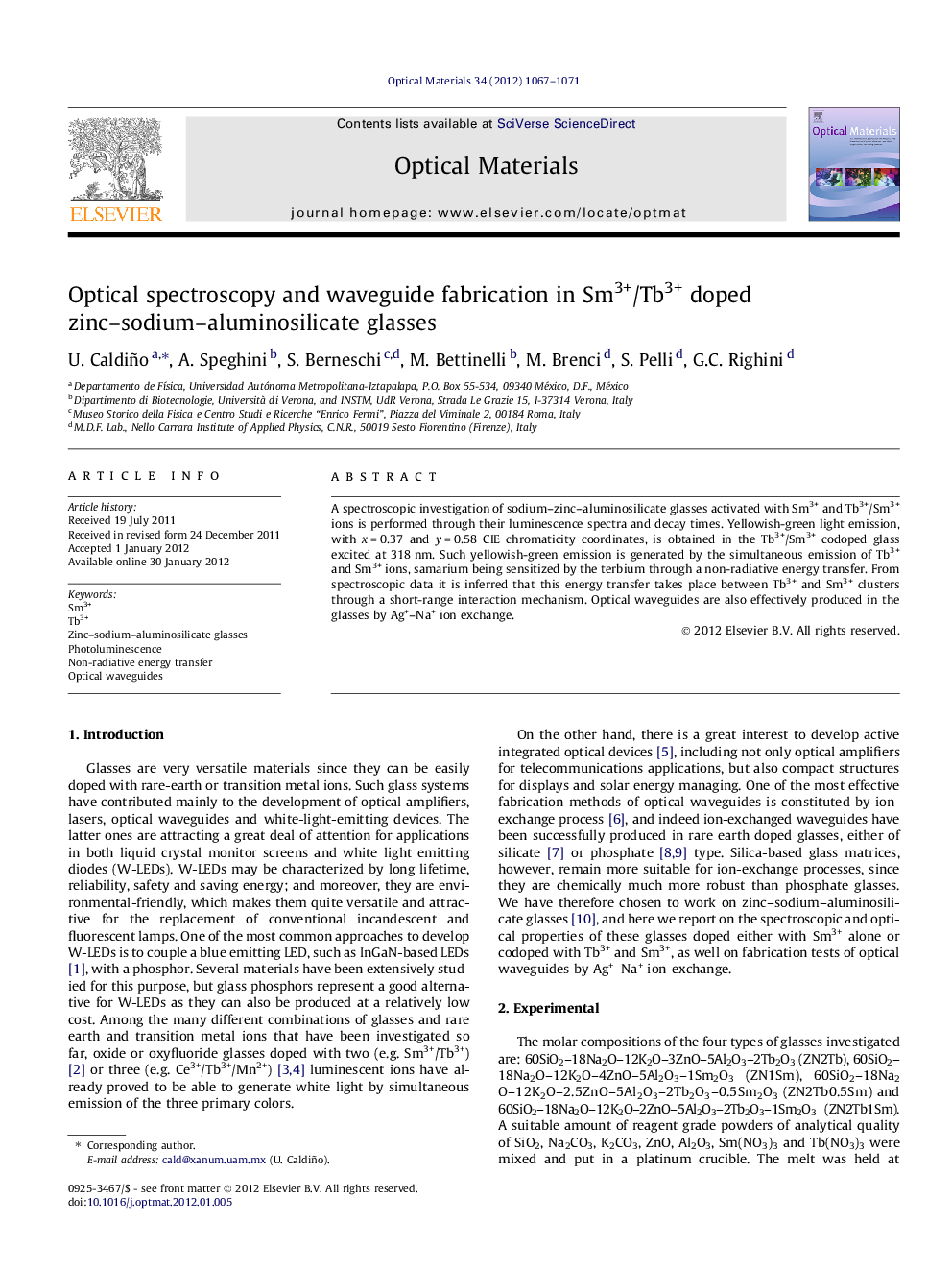| Article ID | Journal | Published Year | Pages | File Type |
|---|---|---|---|---|
| 1495813 | Optical Materials | 2012 | 5 Pages |
A spectroscopic investigation of sodium–zinc–aluminosilicate glasses activated with Sm3+ and Tb3+/Sm3+ ions is performed through their luminescence spectra and decay times. Yellowish-green light emission, with x = 0.37 and y = 0.58 CIE chromaticity coordinates, is obtained in the Tb3+/Sm3+ codoped glass excited at 318 nm. Such yellowish-green emission is generated by the simultaneous emission of Tb3+ and Sm3+ ions, samarium being sensitized by the terbium through a non-radiative energy transfer. From spectroscopic data it is inferred that this energy transfer takes place between Tb3+ and Sm3+ clusters through a short-range interaction mechanism. Optical waveguides are also effectively produced in the glasses by Ag+–Na+ ion exchange.
► Yellowish-green emission can be generated from Tb3+ and Sm3+ co-doped zinc–sodium–aluminosilicate glasses excited at 318 nm. ► This frequency conversion may be exploited for a better management of solar energy spectrum in solar cell systems. ► The Sm3+ is sensitized by Tb3+ through a non-radiative energy transfer. ► Highly multimode waveguides can be fabricated by diluted silver–sodium exchange.
